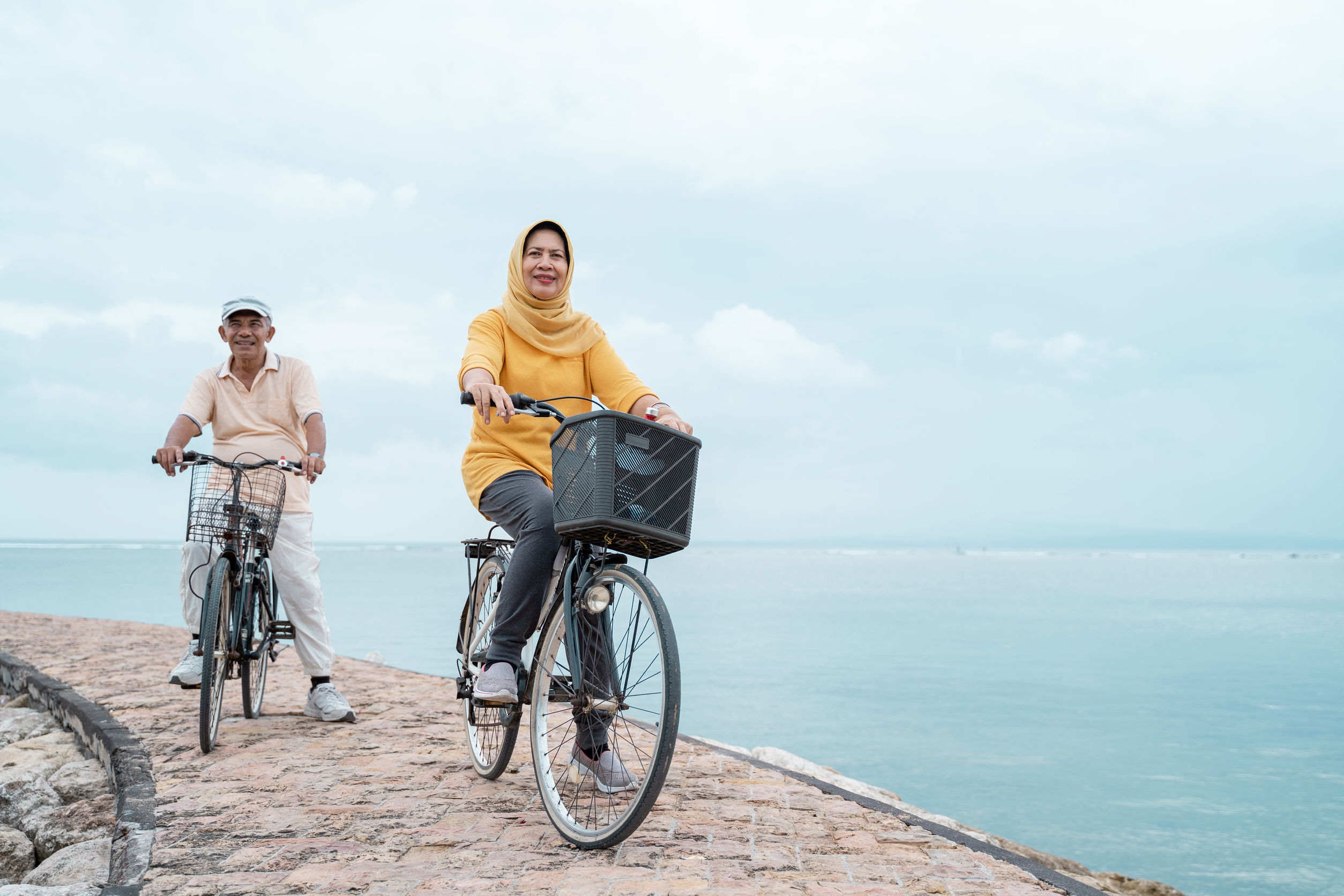When it comes to living to the ripe old age of 100, good genes help but don’t tell the full story. Where you live has a significant impact on the likelihood that you will reach centenarian age, suggests a new study conducted by scientists at Washington State University’s Elson S. Floyd College of Medicine.
Findings suggest that Washingtonians living in highly walkable, mixed-age communities may be more likely to live to their 100th birthday
Published in the International Journal of Environmental Research and Public Health and based on Washington State mortality data, the research team’s findings suggest that Washingtonians who live in highly walkable, mixed-age communities may be more likely to live to their 100th birthday. They also found socioeconomic status to be correlated, and an additional analysis showed that geographic clusters where the probability of reaching centenarian age is high are located in urban areas and smaller towns with higher socioeconomic status, including the Seattle area and the region around Pullman, Wash.
Study adds to the growing body of evidence that social and environmental factors contribute significantly to longevity
“Our study adds to the growing body of evidence that social and environmental factors contribute significantly to longevity, said study author Rajan Bhardwaj, a second-year WSU medical student who took an interest in the topic after serving as a home care aide to his aging grandfather. Earlier research, he said, has estimated that heritable factors only explain about 20 to 35% of an individual’s chances of reaching centenarian age.
“We know from previous research that you can modify, through behavior, your susceptibility to different diseases based on your genetics,” explained Ofer Amram, the study’s senior author and an assistant professor who runs WSU’s Community Health and Spatial Epidemiology (CHaSE) lab.
When you live in an environment that supports healthy aging, this likely impacts your ability to successfully beat your genetic odds
In other words, when you live in an environment that supports healthy aging, this likely impacts your ability to successfully beat your genetic odds through lifestyle changes. However, there was a gap in knowledge as to the exact environmental and social factors that make for an environment that best supports living to centenarian age, which this study helped to address.
In collaboration with co-authors Solmaz Amiri and Dedra Buchwald, Bhardwaj and Amram looked at state-provided data about the deaths of nearly 145,000 Washingtonians who died at age 75 or older between 2011 and 2015. The data included information on each person’s age and place of residence at the time of death, as well as their sex, race, education level and marital status.
Based on where the person lived, the researchers used data from the American Community Survey, Environmental Protection Agency, and other sources
Based on where the person lived, the researchers used data from the American Community Survey, Environmental Protection Agency, and other sources to assign a value or score to different environmental variables for their neighborhood. The variables they looked at included poverty level, access to transit and primary care, walkability, percentage of working age population, rural-urban status, air pollution, and green space exposure. Subsequently, they conducted a survival analysis to determine which neighborhood and demographic factors were tied to a lower probability of dying before centenarian age.
They found that neighborhood walkability, higher socioeconomic status, and a high percentage of working age population (a measure of age diversity) were positively correlated with reaching centenarian status.
Findings indicate that mixed-age communities are very beneficial for everyone
“These findings indicate that mixed-age communities are very beneficial for everyone involved,” said Bhardwaj. “They also support the big push in growing urban centers toward making streets more walkable, which makes exercise more accessible to older adults and makes it easier for them to access medical care and grocery stores.” Amram added that neighborhoods that offer more age diversity tend to be in urban areas, where older adults are likely to experience less isolation and more community support.
Meanwhile, Bhardwaj said their findings also highlight the importance of continuing efforts to address health disparities experienced by racial minorities, such as African Americans and Native Americans. Consistent with previous research findings, for example, the data shows being white is correlated with living to 100. Looking at gender, the researchers also found that women were more likely to reach centenarian age.
Researchers wanted to see in which areas of the state people had a higher probability of reaching centenarian age
Finally, the researchers wanted to see in which areas of the state people had a higher probability of reaching centenarian age. For each neighborhood, they calculated the years of potential life lost, or the average number of years deceased individuals would have had to continue living to reach age 100. Neighborhoods with lower values for years of potential life lost were considered to have a higher likelihood of reaching centenarian age, and vice versa.
When they mapped the years of potential life lost for all neighborhoods across the state, they saw clusters with high likelihood of living to centenarian age in higher socioeconomic areas in urban centers and small towns across the state, including the greater Seattle area and the Pullman region.
The researchers said the study findings could eventually be used to create healthier communities that promote longevity in older adults
While more research is needed to expand upon their findings, the researchers said the study findings could eventually be used to create healthier communities that promote longevity in older adults.
An interactive map of Washington State’s so-called “blue zones” — areas of high centenarian prevalence, calculated as centenarian deaths as a percentage of all deaths of those aged 75 and over — is available on the WSU Community Health and Spatial Epidemiology lab website, which also provides a brief summary of the study.
1. Rajan Bhardwaj, Solmaz Amiri, Dedra Buchwald, Ofer Amram. Environmental Correlates of Reaching a Centenarian Age: Analysis of 144,665 Deaths in Washington State for 2011−2015. International Journal of Environmental Research and Public Health, 2020; 17 (8): 2828 DOI: 10.3390/ijerph17082828

Razi Berry is the founder and publisher of the journal Naturopathic Doctor News & Review, which has been in print since 2005, and the premier consumer-faced website of naturopathic medicine, NaturalPath. She is the host of The Love is Medicine Project docuseries, The Natural Cancer Prevention Summit, The Heart Revolution-Heal, Empower and Follow Your Heart, and the popular 10-week Sugar Free Summer program. From a near death experience as a young girl that healed her failing heart, to later overcoming infertility and chronic fatigue syndrome and fibromyalgia through naturopathic medicine, Razi has lived the mind/body healing paradigm. Her projects uniquely capture the tradition and philosophy of naturopathy: The healing power of nature, the vital life force in every living thing and the undeniable role that science and mind/body medicine have in creating health and overcoming dis-ease. You can follow Razi on social media: Facebook at Razi Berry, Instagram at Razi.Berry and join the Love is Medicine group to explore the convergence of love and health. Look for more, and listen to more Love is Medicine podcast episodes here.




